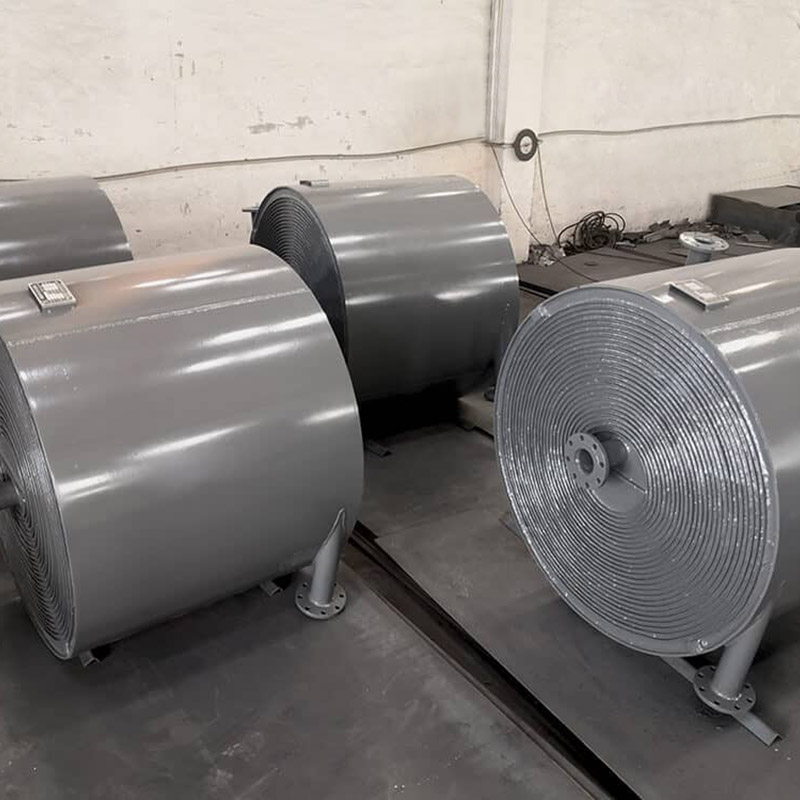Heat Exchangers: Analysis of Key Application Areas and Industrial Scenarios
Release time:2025-08-21
Visits:42
A heat exchanger is a core device that regulates the temperature of hot and cold media through heat transfer, also known as a heat exchanger. Its core function is to ensure precise temperature control in industrial production and improve energy utilization efficiency. It is widely used in multiple fields such as energy, chemical engineering, heating, ventilation, and transportation. The following analyzes the key roles of heat exchangers in detail from the main application scenarios.
I. Core Component of Energy and Power Systems
In thermal power plants, heat exchangers condense steam into water by cooling it, significantly improving the cycle efficiency of the power generation system. Nuclear power plants rely on heat exchangers for reactor cooling and waste heat recovery to ensure the safe use of nuclear energy. In geothermal power generation and solar thermal systems, heat exchangers efficiently transfer geothermal or solar thermal energy to the power generation medium to promote the conversion of clean energy. For example, thermal power plants convert the thermal energy of boiler steam into high - pressure water to drive steam turbines through heat exchangers, facilitating the stable output of electricity.
II. Production Pillar in the Chemical and Petroleum Industries
In the chemical production process, heat exchangers precisely control the reaction temperature and are applied in processes such as raw material pre - heating, product cooling, and distillation purification. In the petroleum refining field, heat exchangers undertake tasks such as crude oil heating and temperature adjustment for catalytic cracking. For example, in ethylene production, they recover the waste heat of high - temperature cracked gas to reduce energy consumption. In the natural gas industry chain, heat exchangers are required in both the liquefaction and gasification processes to achieve rapid heat exchange between gaseous and liquid media.
III. Key Device for HVAC and Building Energy Efficiency
The condensers and evaporators in central air - conditioning systems adjust the indoor temperature through heat exchangers to achieve a balance between cooling and heating loads. Heat pump technology extracts thermal energy from air, water sources, or soil through heat exchangers, providing an efficient solution for building heating or cooling. In district heating systems, heat exchangers distribute the centrally supplied thermal energy to user ends, significantly reducing energy transmission losses.
IV. Standardization Guarantee in the Food and Pharmaceutical Industries
In food processing, heat exchangers are used in processes such as pasteurization, high - temperature short - time sterilization of fruit juices, and cooling of dairy products to ensure food safety and quality. In the pharmaceutical industry, heat exchangers control the temperature of drug fermentation, crystallization, and drying. For example, vaccine production requires a strictly controlled temperature environment, and heat exchangers provide stable and efficient heat transfer support.
V. Heat Dissipation Support for Transportation Equipment
The cooling system of automobile engines maintains the stability of oil and water temperatures through heat exchangers, preventing equipment from overheating and being damaged. Marine power plants rely on heat exchangers for the circulating cooling of lubricating oil and at the same time recover the waste heat of exhaust gas to reduce fuel consumption. In the aviation field, heat exchangers are used for the heat dissipation management of aircraft hydraulic systems and avionics equipment to ensure flight safety.
VI. Frontier Applications in Environmental Protection and Emerging Technologies
In the field of environmental protection, heat exchangers recover the waste heat from industrial wastewater and exhaust gas, reducing carbon emissions and treatment costs. For example, steel plants use heat exchangers in waste heat boilers to convert high - temperature flue gas into steam for production. In the new energy field, the thermal management system of hydrogen fuel cells requires heat exchangers to maintain the temperature of the stack and improve energy conversion efficiency.
VII. Precise Temperature Control in Metallurgy and Machinery Manufacturing
In the metallurgical industry, heat exchangers are used in the cooling process of metal smelting. For example, the temperature adjustment of aluminate mother liquor directly affects the material properties. In the machinery manufacturing field, the cooling system of machine tools quickly dissipates the cutting heat through heat exchangers, extending the service life of equipment and ensuring processing accuracy.

With the innovation of industrial technology,
heat exchangers are being upgraded in the directions of high efficiency, light weight, and intelligence. The application of new materials (such as corrosion - resistant alloys) and structural optimization (such as micro - channel design) further expand their application boundaries and promote the achievement of energy - saving and green production goals. In the future, heat exchangers will play a more central role in key areas such as carbon neutrality and renewable energy, providing technical support for global sustainable development.

